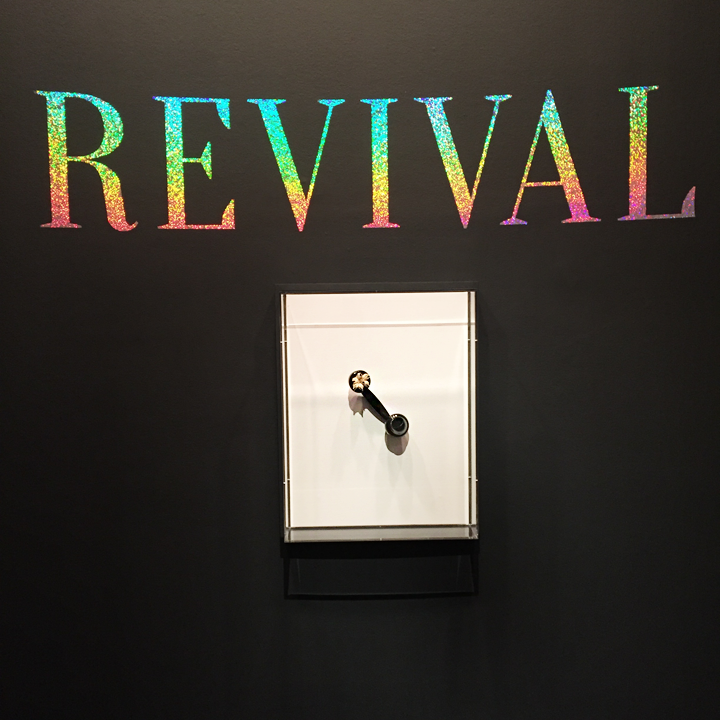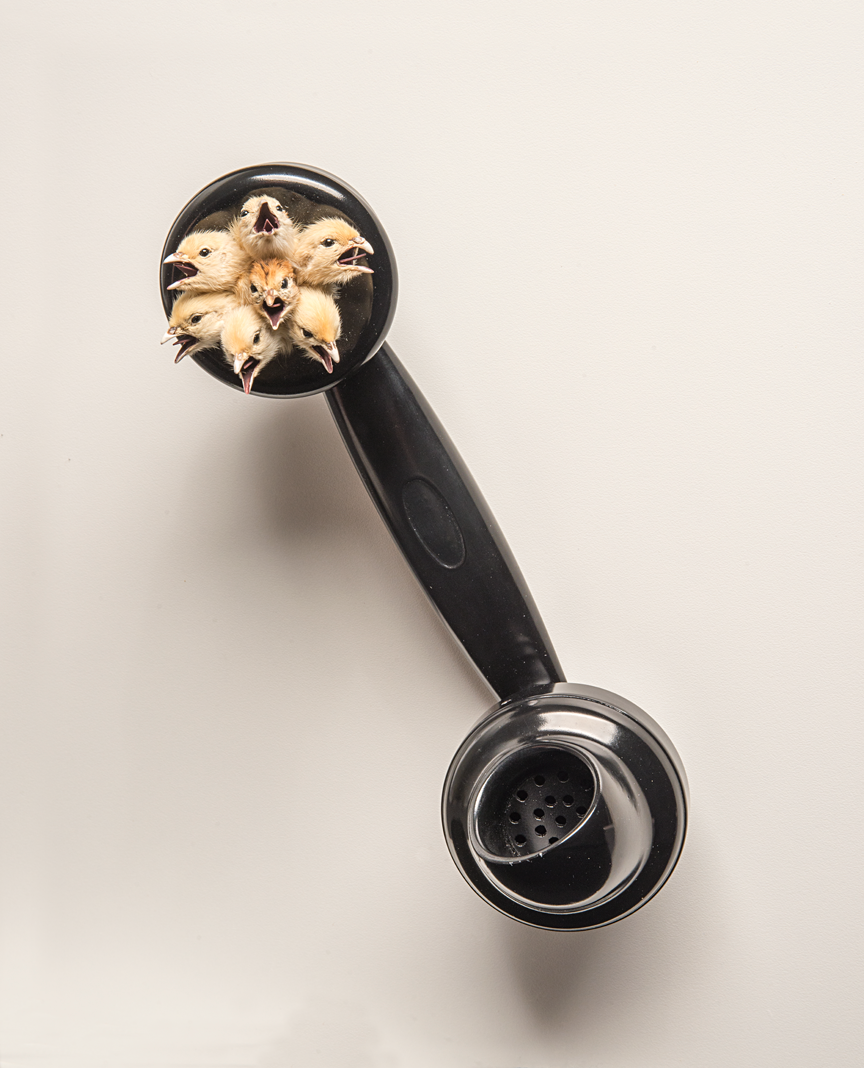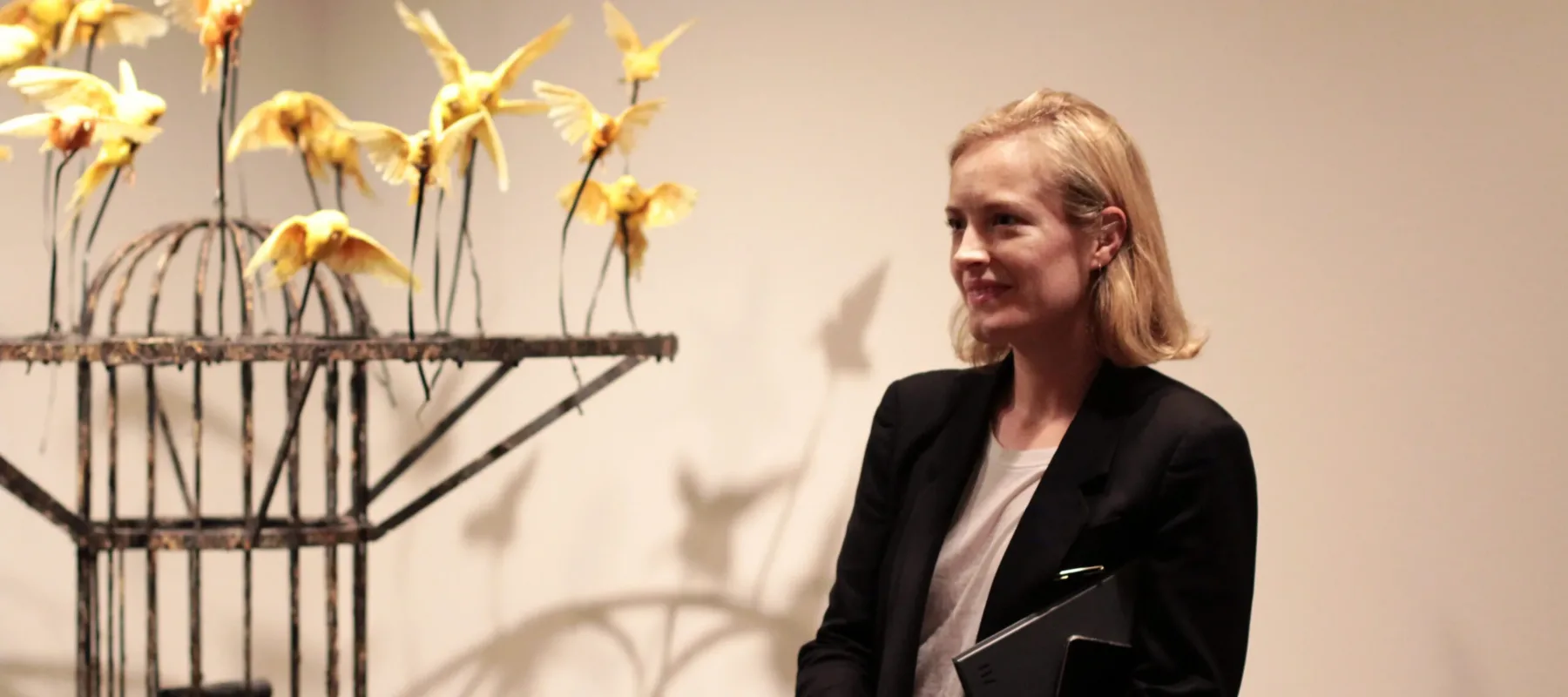In celebration of NMWA’s 30th anniversary, and inspired by the museum’s focus on contemporary women artists as catalysts for change, Revival illuminates how women working in sculpture, photography, and video use spectacle and scale for expressive effect.

Polly Morgan (b. 1980, Banbury, Oxfordshire, England)
Growing up in the countryside, Polly Morgan always had a pack of unusual pets keeping her company, forcing her to learn about living with animals. Only after she moved to London did she realize how fascinating their bodies became in death.
Today, Morgan makes a career out of crafting haunting sculptures from taxidermy animal carcasses.
Morgan’s work straddles scientific and artistic disciplines. Although she follows in the footsteps of scientific convention, she endows even this process a meaning beyond preservation. Her work forces viewers to contemplate death even as she incorporates taxidermy animals into vibrant sculptures, marking a simultaneous rejection and acceptance of death’s place in life.
The Artist’s Voice:
“I’m not a morbid person, I’m actually really optimistic. I hate the fact that death hangs over us all our lives. I see [the aesthetic of the body] as a raw material to work with; with no soul left, the body becomes a beautiful ornament.”—Polly Morgan, interview in The Independent
“Taxidermy is an ultimately futile effort to harness nature, it allows us to manipulate and control the body of an animal in a way we would struggle, or in my case would not wish, to in life. . . . Most objects can be art; a urinal, a bed, etc. A dead animal presents a problem in that it decays and can therefore only exist a finite amount of time before being altered irrevocably. Taxidermy has thus allowed me to incorporate animals in my work the way other sculptors use ‘found objects.’”—Polly Morgan, interview in Broad Strokes.

Revival Highlight:
Receiver (2009), featured in Revival, illustrates Morgan’s capacity for duality in her work. In this piece seven chicks poke their heads from the receiver end of a telephone, beaks agape. Though their tiny heads and nestled bodies imply a tender helplessness in youth, the mere sight of their open beaks evokes a grating shrill in the viewer’s mind.
Morgan incorporates the natural into the artificial, drawing revealing parallels between the chicks and their unexpected nest. Despite representing the possibility of tender interpersonal connection, too often technology like the telephone becomes an outlet for aggression rather than affection, replacing compassion with confrontation. Even as the chicks evoke nurturing tenderness in the viewer, their implied proximity to the listener’s ear makes their pleas a confrontational disruption to gentler discourse. By combining the natural and artificial Morgan draws discomfort from what should represent convenience, calling into question the intention and functional use behind communicative technology such as the phone through deliberate visual dissonance.
Visit the museum and explore Revival, on view through September 10, 2017.
